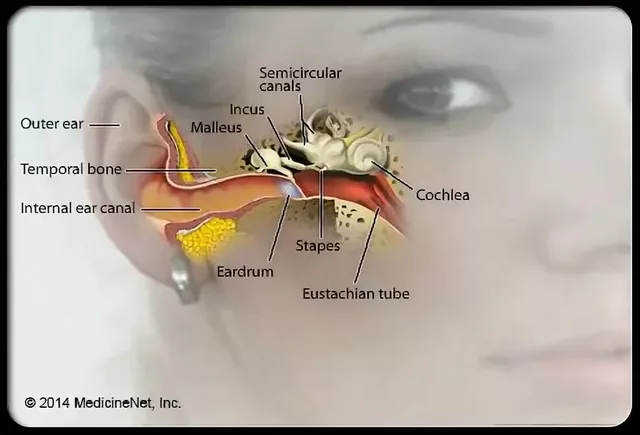The Science Behind Cinnarizine's Effectiveness in Treating Motion Sickness
Understanding Motion Sickness
Before we delve into the science behind Cinnarizine, it's important to understand what motion sickness is. Motion sickness is a common condition that can occur during car rides, boat trips, airplane flights and even amusement park rides. Basically, it happens when your brain receives conflicting information from your inner ears, eyes, and other parts of your body about your motion and body position. This confusion can lead to symptoms like nausea, dizziness, and vomiting.
What is Cinnarizine?
Cinnarizine is a medication that falls under the category of antihistamines. It’s mainly used to control vomiting due to motion sickness. But it isn't just limited to this condition. Cinnarizine can also be used to treat symptoms of inner ear conditions, like dizziness, tinnitus, and vertigo. It's a non-prescription drug in many countries, making it easily accessible for those in need.
How Does Cinnarizine Work?
In order to understand how Cinnarizine works, we need to delve a bit into our body's physiology. Your body has a system called the vestibular system that helps you maintain balance. It's located in your inner ear and communicates with your brain to control your sense of balance. When you move, this system sends signals to your brain about your body's motion. If these signals don't match with what your eyes are seeing, you may experience motion sickness.
Cinnarizine works by blocking the signals from the vestibular system to your brain. It does this by inhibiting the H1 histamine receptor. When this receptor is blocked, the signals that cause symptoms of motion sickness are reduced, helping you feel better.
The Evidence Supporting Cinnarizine
There's a solid body of evidence supporting the use of Cinnarizine for motion sickness. Numerous studies have found that it's more effective than a placebo at preventing and treating the symptoms of motion sickness. Moreover, Cinnarizine has been found to be as effective as other common motion sickness drugs, like meclizine and dimenhydrinate.
Side Effects and Precautions
Like any medication, Cinnarizine can have side effects and it's important to be aware of them. Some common side effects include dry mouth, drowsiness, and weight gain. However, these side effects are generally mild and go away as your body adjusts to the medication.
It's also important to note that Cinnarizine should not be used by people with certain medical conditions, such as Parkinson's disease or prostate problems. As always, it's best to consult with a healthcare provider before starting any new medication.
The Role of Cinnarizine in Travel
Given its effectiveness in treating motion sickness, Cinnarizine has a major role to play in travel. Whether you're heading out on a road trip, boarding a flight, or setting sail on a cruise, having Cinnarizine on hand can help ensure your journey is a pleasant one. It's especially useful for people who experience severe motion sickness or who are embarking on long journeys.
Conclusion: Cinnarizine's Place in Motion Sickness Treatment
In conclusion, the science behind Cinnarizine’s effectiveness in treating motion sickness is quite clear. By blocking the signals that cause symptoms of motion sickness, it can help prevent and treat this common condition. With its proven effectiveness and minimal side effects, Cinnarizine is a valuable tool in our arsenal against motion sickness.







15 Comments
Beth Lyon
July 16, 2023 at 04:50
I’ve tried cinnarizine on a few long road trips and it pretty much took the nausea away. It’s a solid low‑key option if you don’t want a prescription, and it definately helped me keep my cool when the seas got rough.
Nondumiso Sotsaka
July 16, 2023 at 05:40
Great summary! 🙌 Cinnarizine really shines as a travel companion, especially when you’re on a marathon flight or a winding mountain drive. Keep spreading the knowledge! 🌟
Ashley Allen
July 16, 2023 at 06:30
Works well for me on boat trips.
Brufsky Oxford
July 16, 2023 at 07:20
From a philosophical standpoint, the vestibular system is like a tiny internal compass; when it’s disoriented, our perception collapses. Cinnarizine essentially re‑calibrates that compass, letting the mind focus on the present. It’s a subtle alchemy of chemistry and cognition ;)
Lisa Friedman
July 16, 2023 at 08:10
Did you know that the first clinical trial of cinnarizine dates back to the 1970s, and it was originally investigated for histamine‑mediated vestibular disorders? Its antihistaminic action also makes it useful against motion‑induced vertigo, which is why many sailors prefer it over traditional anticholinergics. Also, the drug has a relatively long half‑life of around 14‑18 hours, providing sustained relief for long journeys.
cris wasala
July 16, 2023 at 09:00
Nice info Lisa! Its half‑life means you can take one dose before a trip and be covered for most of the ride. Just remember to avoid alcohol while using it
Tyler Johnson
July 16, 2023 at 09:50
When you consider the underlying neurophysiology, the vestibular apparatus functions as a sophisticated gyroscopic sensor that continuously relays angular momentum data to the vestibular nuclei, which then integrate this information with visual cues from the occipital cortex. In a state of sensory conflict-say, reading a book while the vehicle moves-the brain receives mismatched inputs, leading to the classic symptom constellation of nausea, dizziness, and vomiting. Cinnarizine exerts its therapeutic effect primarily by antagonizing H1 histamine receptors, which are densely populated on the vestibular hair cells and the central processing pathways. By dampening histaminergic signaling, the drug reduces the excitatory volley that would otherwise amplify the sensory mismatch. This attenuation translates clinically into a reduction of the nausea threshold, meaning the brain tolerates greater discord before triggering the emetic response. Moreover, cinnarizine possesses calcium‑channel blocking properties, which further stabilize neuronal firing rates within the vestibular nuclei, providing an added layer of protection against over‑excitation. Studies have consistently demonstrated that a single 25 mg dose can achieve plasma concentrations sufficient to block both histamine and calcium channels for up to twelve hours, making it ideal for long‑haul journeys. Comparative trials with meclizine and dimenhydrinate have shown that cinnarizine offers comparable efficacy with a slightly better side‑effect profile, particularly regarding sedation, though individual responses vary. Side‑effects such as dry mouth and mild drowsiness are generally transient and can be mitigated by timing the dose an hour before departure. It is also noteworthy that cinnarizine should be avoided in patients with Parkinsonian syndromes due to its dopamine antagonism, a nuance often missed in over‑the‑counter discussions. From a public health perspective, the accessibility of cinnarizine as an OTC medication democratizes anti‑motion‑sickness care, allowing travelers in remote regions to maintain functional mobility without the need for prescription visits. In summary, the drug’s multimodal mechanism-histamine antagonism, calcium channel blockade, and modest antihistaminic sedation-creates a synergistic effect that restores sensory congruence and quells the nauseogenic cascade.
Annie Thompson
July 16, 2023 at 10:40
Reading that dense paragraph is like riding a roller coaster of science and emotion combined It’s fascinating how a single pill can calm the storm inside our heads while the world swirls around us The interplay of chemistry and perception feels almost poetic yet it also reminds us of how fragile our balance truly is I sometimes wonder if we’re all just walking on a tightrope of neurotransmitters and vestibular whispers The reassurance that cinnarizine can steady that rope is comforting however it also underscores our reliance on pharmaceuticals to navigate the chaos of motion It’s a bittersweet realization that modern travel demands such chemical crutches Yet at the same time the relief it offers can turn a dreaded trip into a serene adventure It’s almost like gifting yourself a whisper of calm in the midst of turbulence
Parth Gohil
July 16, 2023 at 11:30
From a systems‑engineering viewpoint, cinnarizine acts as a modulatory damping factor in the vestibular feedback loop. By attenuating the high‑frequency noise, it improves signal‑to‑noise ratio for the central integrator. This is especially relevant in multimodal transport scenarios where proprioceptive and visual streams compete.
VAISHAKH Chandran
July 16, 2023 at 12:20
While western scholars flaunt their fancy drugs, they ignore the indigenous wisdom that our ancestors used-natural ginger roots. Cinnarizine is but a corporate shortcut, lacking the cultural depth of traditional remedies. Proudly, we must champion homegrown solutions over imported pills.
Pat Merrill
July 16, 2023 at 13:10
Ah, the great debate about OTC meds-so thrilling! 🙄 It’s almost adorable how we think a 25 mg tablet can solve every wave of nausea. Meanwhile, the real solution is just to *not* get on a boat in the first place, but hey, who am I to ruin your vacation vibes?
Vicki Roth
July 16, 2023 at 14:00
I appreciate the thorough breakdown, especially the part about calcium‑channel blockade. It’s useful to know why some people feel less drowsy with cinnarizine compared to other antihistamines.
Vishal Bhosale
July 16, 2023 at 14:50
Honestly, it works but the hype is overblown. Just take it and move on.
Garima Gauttam
July 16, 2023 at 15:40
Sure, it helps, but what about the underlying vestibular dysfunction? A pill isn’t a cure, it’s a band‑aid.
Georgia Nightingale
July 16, 2023 at 16:30
Let me dramatize this: Imagine being trapped in a vortex of motion, nausea clawing at your throat, and then-*boom*-cinnarizine swoops in like a heroic savior. Yet, the tragedy remains that we rely on such chemical knights to survive the simple act of traveling. It’s poetic, it’s pathetic, and it’s the truth.